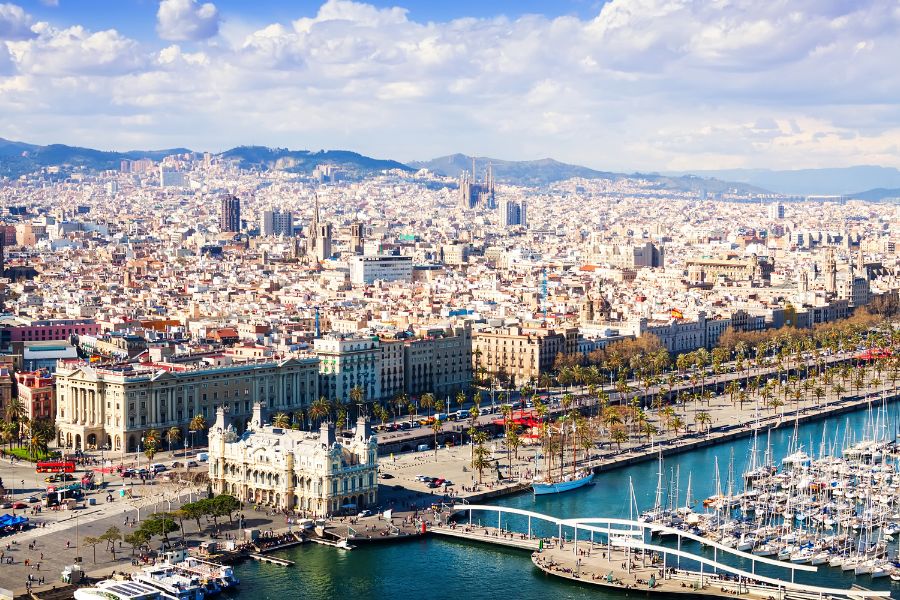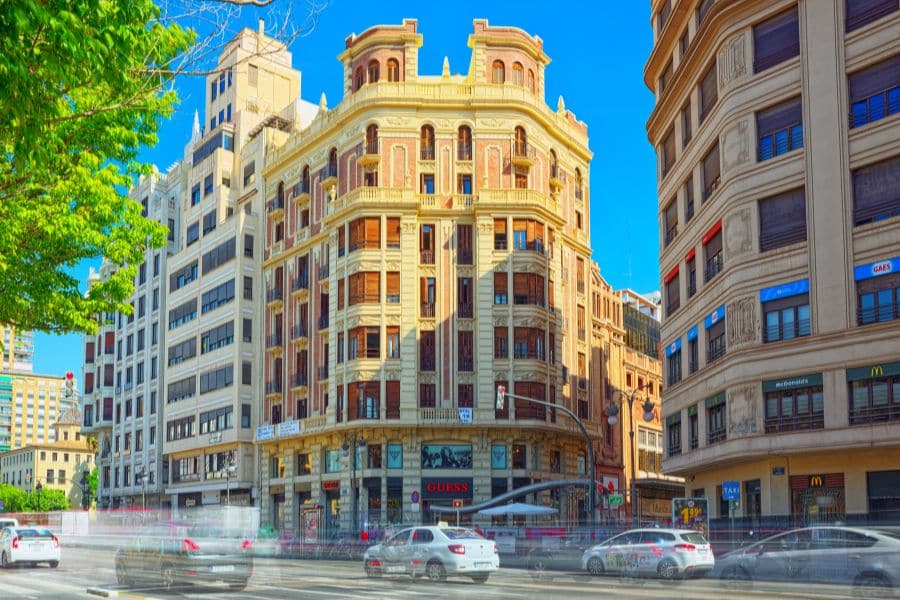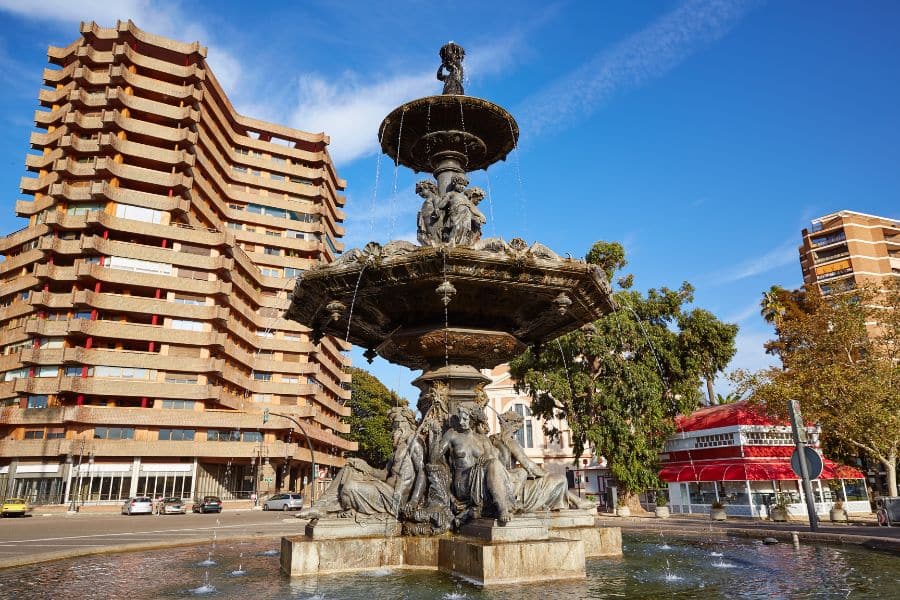Travel to Spain: Your Ultimate Guide to Exploring Spain’s Wonders
Have you ever dreamt of a vacation that combines rich history, culinary delights, and spectacular landscapes? The answer lies in visiting Spain.
Wandering the vibrant streets of Barcelona, musing at Gaudi’s architectural masterpieces, and sweeping away by the fiery passion of a flamenco performance in Seville, you will feel Spain isn’t just another vacation destination; it offers an immersive experience like no other. And that’s not all; visiting Spain can provide you with some of the best moments of your life. From its pleasant weather to Sunkissed beaches, rich history, and warm and hospitable locals, Spain will imbue your life with precious moments and memories to treasure forever.
However, your travel to Spain can be as dreamy and attractive with proper planning as it can be dreadful and disorganised without a travel itinerary. So, we cannot emphasise enough the importance of planning and preparation as you plan to travel to Spain.
We have created a comprehensive travel to Spain guide that will unveil the best places to visit and the best activities to enjoy as you explore this country’s captivating beauty. We will cover everything from preparing for your trip to creating an itinerary, the best places to visit, cities you cannot miss in Spain, and every other piece of information that you require to have a safe and enjoyable trip to Spain.
Preparing For Your Trip

Best Time To Visit Spain
Irrespective of when you plan your trip to Spain, the country will find a way to entertain and please you. However, the most popular seasons to visit Spain are the summers and winters. Summer is the time when the country is dolled up in festivities; it opens its arms wide for exciting trails, adventures, and more. Winters call for a time when you can go towards the south coast, where you can relax and stay warm while enjoying Spanish culture and traditions.
Climate and weather considerations
Spain enjoys the standard weather that we usually experience in all Mediterranean regions. The summers are hot and dry, while the winters are cool. However, the weather is not consistent throughout the country, and depending upon the region’s proximity to mountains, valleys, or the Mediterranean Sea, it may differ.
As you plan your travel to Spain, ensure that you check the weather and pack comfortable clothes for your stay.
Peak Tourist Seasons vs. Off-peak Times
Spain’s summers last from late June to August, which is the peak season for travellers. If you want to enjoy the country’s beauty when it is least crowded, you must travel to Spain during April–June and September–October.
Visa And Travel Documentation
Spain is a member of the Schengen group, and with a Schengen visa, you can visit Spain and the other member countries.
Visa Requirements For Different Nationalities
- All the non-EU countries must apply for a tourist visa to travel to Spain.
- Some non-EU countries like the US, US, New Zealand, Singapore, and several South American countries are permitted visa-free entry to Spain up to 90 days of travel within the Schengen area.
Necessary Travel Documents
- A valid visa to travel to Spain
- A valid passport with a minimum of 6 months validity.
- A health certificate
- Traveller’s insurance
- Pan card/ Income certificate
Health And Safety
Before you plan to travel to Spain, it is essential to meet your local health practitioner and ensure you get all the recommended vaccinations:
Recommended Vaccinations
You should get all the recommended vaccinations from your home country, and additionally, you should get a tetanus vaccination before travelling to Spain.
Travel Insurance Tips
It is essential to stay on top of the travel insurance when you travel to Spain. A traveller’s insurance will cover you against some unexpected incidents in a foreign country. From the loss of baggage to any mishaps in Spain, the insurance will cover everything.
General Safety Advice
Here are some general safety advice you should follow:
- Food hygiene is very high in Spain and hence, travellers are unlikely to fall ill.
- If you are happy with the food, you can tip up to 10% of the total bill to the waiter.
- Tap water is safe to drink throughout Spain.
- Spain is one of the safest destinations to travel, and it is considered an excellent destination for solo women travellers.
Getting To Spain

Spain is one of the most popular destinations in Europe and is very well connected by all the major airports in the world. Additionally, the country has excellent relations with its neighbouring as well as most of the countries from other coasts as well. Here’s everything you should know about travelling to Spain.
Major International Airports
Let us give you a brief about the major international airports where you can land from your home country:
Madrid-Barajas Airport
Located in Spain’s capital city, Madrid, Madrid-Barajas Airport is one of the largest airports in the country. It serves daily flights to the US, UK, Canada, and Asian countries.
Barcelona-El Prat Airport
Barcelona-El Prat Airport is also a leading airport in Barcelona. It receives flights from all the major countries of the world.
Other Significant Airports
Some other airports in Spain are Palma De Mallorca, Málaga–Costa Del Sol, Gran Canaria Airport, and many more.
Transportation Options
Travellers from EU and non-EU countries can comfortably travel to Spain by direct flight. However, EU nationals and UK nationals can even take a train to Spain and enjoy the hospitality of the EU rail.
When it comes to travelling by road, you can either choose Eurail or Renfe, both of which are rail companies connecting different countries and cities in the EU. You can book your tickets to travel to Spain at the official websites of Eurail and Renfe.
Spain receives popular cruises like the Norwegian Cruise Line and many more at its dock. If you are keen on travelling to the country via sea route, you can book your tickets on a cruise and enjoy coastal travel while experiencing the hospitality of the cruise line.
Accommodation Options

Accommodation is one of the essential aspects of your itinerary to Spain. Ensure that you book your accommodation in advance before you travel to Spain.
Types Of Accommodation
Do you know what is the best part about travelling to Spain? Spain suits individuals of every budget. On the one hand, you will see luxurious hotels reflecting the rich history of the country. On the other hand, some hostels and dorms are perfect for solo travellers or people travelling under a limited budget:
Hotels
The vibrant country of Spain is dotted with luxurious as well as affordable hotels to suit everyone’s budget. There are city hotels, luxurious hotels, and beach resorts, which you can choose as per your convenience and travel plans.
Hostels
Hostels, aka pensiones, are a go-to choice for people travelling to Spain on a budget. The main benefit of choosing these hostels is their cost-effectiveness. If you want to save on your accommodation, hostels are an ideal choice.
Vacation Rentals (Airbnb, Vrbo)
Rental apartments like those available at Airbnb and Vrbo offer flexibility to travellers who want to enjoy their time in Spain at their own will. These stay options bring a host of benefits to travellers, such as living areas, multiple bedrooms, and a place that allows guests to rest as well.
Paradors (Luxury Historic Hotels)
Paradors are boutique hotels in Spain known for their rustic charm you do not see anywhere else in the world. These hotels are built in historic places like castles, old convents, monasteries, and so on.
Tips For Booking Accommodation
When you book your accommodation as you plan to travel to Spain, you should take care of the following points:
Budgeting and cost considerations
Sit with your family first and later with your travel agent to decide the budget and make travel plans within it. With an outlined budget, it will be easier for you to choose accommodation that is not very expensive and not very cheap, so you will have to compromise on the quality of living.
Location and accessibility
Another important thing to consider is the location of your stay. We suggest you book your stay near the places of interest so that you can save on transportation.
Must-visit Cities And Regions

With detailed information, you can start planning your travel to Spain and creating your itinerary. Spain is a large country, and there are many places to visit. Here is a list of places that you cannot miss.
Madrid
Madrid is the capital of Spain and serves as a gateway to both the north and the south.
Major Attractions
When in Madrid, try to visit the Prado Museum and Royal Palace to soak your soul into some historic significance of Spanish culture. You can also include a visit to Retiro Park, a world UNESCO heritage site.
Cultural Experiences (Flamenco, Cuisine)
Spain boasts some of the world’s most exciting and longest luncheons. Indulge in some mouthwatering and soul-satisfying cuisine in the city of Madrid. While tasting the delectable delights in Madrid, glue your eyes to the spectacular Flamenco Dance at Seville.
Barcelona

Barcelona is a tourist hub located on the right coast of the Mediterranean Sea. The city boasts some of the country’s most beautiful architecture.
Gaudi’s Masterpieces
Witness some of the spectacular works done by Antoni Gaudi and Pablo Picasso because the city is Spain’s artistic canvas. La Sagrada Familia is one of Gaudi’s most famous artworks.
Beach And Nightlife
Besides paying attention to the fine details of the artworks of famous artists, you can also enjoy breathtaking beach views of the Mediterranean Sea. Tourists flock to Barcelona to lose themselves in the vibrant nightlife of the city.
Andalusia
Discover the allure of Andalusia by immersing yourself in its stunning landscapes, rich culture, and captivating history. Here are the places you must visit:
Seville
Reach Seville and visit the Alcazar castle, the Cathedral, & Flamenco dance shows. The town of Seville is popular for its two outstanding festivities famous for their passion and colour: the April fair and the Easter Week religious processions.
Granada (Alhambra)
Next on your itinerary should be Granada and one of the most important sites you must visit is Alhambra. It is a small fortress built in 889AD and is a beautiful UNESCO World Heritage site.
Córdoba (Mezquita)
Explore the stately white village, mountain landscapes, and olive groves of Cordoba, also known as the great mosque of Cordoba.
Valencia

Valencia is the third-most populated region in Spain. The place amuses travellers with its unique blend of old-world charm and futuristic buildings. Travel to Spain and in Valencia, do not miss the following:
City Of Arts and Sciences
It is an architectural and cultural complex in the city of Valencia. It is one of the most modern tourist destinations and is loaded with architectural details. You will never see it anywhere in the world.
Beaches And Festivals
Visit the city of Valencia during July and enjoy the great July fair. It is also a UNESCO heritage festival that gives the town its own charm. Further, if you love enjoying a sunbath on the golden sands by the sea, Valencia is a perfect destination for you.
Basque Country
The Basque Country is a historic region of Spain. From visiting Bilbao’s heritage sites to enjoying Spanish cuisines at the San Sebastian, the place has a lot to offer:
Bilbao
Get spellbound by the architectural curves of the Guggenheim Museum in Bilbao. It is more than an art museum; it is a contemporary architectural landmark
San Sebastián
San Sebastian is one of the most popular places in Spain to enjoy Spanish cuisine. Enjoy world-class dining and experience the luxury of Spanish hospitality in every bite.
Cultural Highlights

Dive into the world of savouring Spanish delicacies, fiestas, and cultural delights. Let us share the details with you here:
Spanish Cuisine
Tapas Culture
Tantalise your taste buds with these bite-sized patatas bravas and gambas al ajillo as you socialise with the locals at electrifying bars.
Regional Specialties
It is time to explore Spain’s culinary map with Savor Pella (Valencian rice), Jamon Iberico (cured ham that melts in your mouth), and pintxos (skewered delights).
Festivals And Events

Spanish people believe in living the best life, and they never take a back seat when it comes to celebrating festivals and fiestas. Here’s what you should try to attend as you travel to Spain.
La Tomatina
The festival of tomatoes will trigger and rekindle your childhood pleasures. Attend this tomato-throwing extravaganza in Bunol.
Running Of The Bulls
Enjoy this spine-chilling activity in Spain. It is the iconic Pamplona festival and not for the faint-hearted.
Semana Santa
Reach Spain during the easter week and witness sombre processions and religious fervour celebrated all over the country.
Outdoor And Adventure Activities

Embrace the warmth of outdoor activities and ignite your passion to try various sports and hike amidst the nature trails.
Hiking and nature trails
Would you like to challenge yourself to climb the majestic Picos de Europa mountains? Yes, do it and test your strength while enjoying some of the spectacular views of the nature trail. You can also embark on the historic Camino de Santigo, a famous pilgrimage in Spain.
Beach Destinations
Spain is home to some of the most stunning beaches in the world. Enjoy walking on the Sunkissed golden sands at the shores of Costa Del Sol or discover the mesmerising nightlife and hidden coves of the Balearic Islands in Ibiza.
Winter Sports
It is time to hit the slopes of the Sierra Nevada, located in the Andalusia region of Spain. It is home to the highest point in continental Spain. It is a mountain range that boasts world-class rock climbing, epic ski terrain, and the clearest alpine lakes.
Pyrenees offers some of the best ski terrain in Spain, along with a fantastic cable car ride. When you are in Pyrenees, you get the feel of the Swiss chalets while experiencing the incredible alpine.
FAQs: Frequently Asked Questions
What is the best time to visit Spain?
The best time to visit Spain is during the summer and winter. However, the off-peak seasons of April-June and September-October offer fewer crowds and pleasant weather.
What travel documents do I need to visit Spain?
Non-EU travelers need a valid passport with at least 6 months validity, a Schengen visa, a health certificate, and travel insurance. Some non-EU countries like the US and Canada have visa-free entry for up to 90 days.
Which cities in Spain are a must-visit?
Must-visit cities in Spain include Madrid, Barcelona, Seville, Granada, Córdoba, and Valencia. Each city offers unique attractions, from historical landmarks to vibrant cultural experiences.
What accommodation options are available in Spain?
Spain offers a range of accommodations to suit all budgets, including luxurious hotels, affordable hostels, vacation rentals (Airbnb, Vrbo), and unique paradors (luxury historic hotels).
What are some cultural highlights and festivals in Spain?
Key cultural highlights include the Flamenco dance, tapas culture, and regional specialties like paella and jamón ibérico. Major festivals include La Tomatina, Running of the Bulls, and Semana Santa (Holy Week).
Key Takeaways

- Diverse Experiences: Spain offers a unique blend of rich history, culinary delights, and spectacular landscapes, making it an immersive travel destination.
- Best Time to Visit: While Spain is enjoyable year-round, the most popular times to visit are summer and winter. Off-peak seasons (April-June and September-October) offer fewer crowds.
- Essential Preparations: Proper planning, including checking weather conditions, obtaining necessary travel documents like a Schengen visa, and securing travel insurance, is crucial for a smooth trip.
- Must-Visit Cities: Key cities to explore include Madrid, Barcelona, Seville, Granada, Córdoba, Valencia, and regions like the Basque Country, each offering unique attractions and cultural experiences.
- Accommodation Options: Spain offers various accommodation types to suit all budgets, from luxurious hotels and paradors to affordable hostels and vacation rentals.
Travelling to Spain can become an experience woven into lifetime memories. We are sure the magic is already stirring in the pot, and now you cannot contain your excitement to feel and experience the charm of the country in real life. The cobbled historic streets, the sun-kissed beaches, the vibrant culture, and the delectable cuisine make this captivating country ready to offer something to every traveller.
We hope our comprehensive guide will help you plan an all-inclusive itinerary to visit Spain, one of the most popular tourist destinations in Europe. Travel to Spain with an open mindset, embrace the laid-back attitude of the locals, enjoy the lingering siestas with them, dance with them on the streets, and do not get scared if you feel lost in the labyrinth of charming villages.
Visit Spain, and when you depart, you will undoubtedly take a piece of Spain with you to your home country.
Image Reference : Freepik
Disclaimer: All trademarks, logos, and brand names are the property of their respective owners. All company, product, and service names used in this website are for identification purposes only. Use of these names, trademarks, and brands does not imply endorsement.




